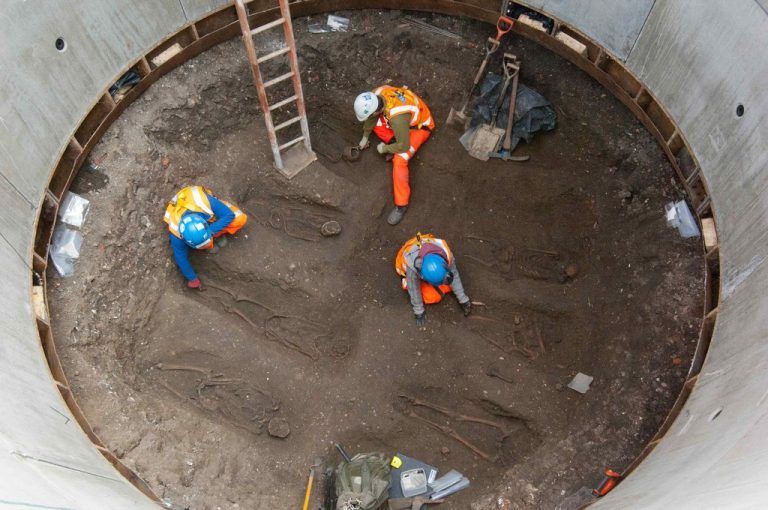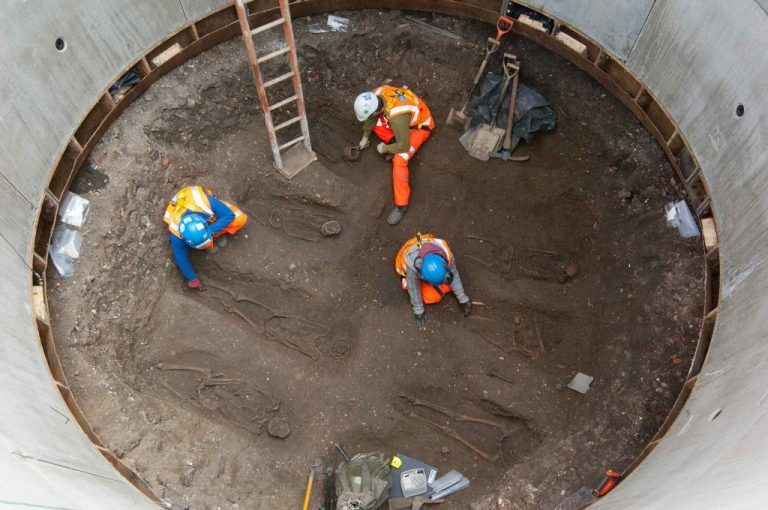Bakterium durch genetische Veränderung zum Mörder geworden

Bei Ausgrabungen für ein Bahnprojekt in London stießen Archäologen im März auf einen Friedhof mit Überresten von rund 50.000 Menschen, die vor mehr als 650 Jahren durch die Pest gestorben sind. Forscher haben nun herausgefunden, dass eine leichte genetische Veränderung am Bakterium Yersinia pestis vor vielen Jahrhunderten die Ursache für dessen Verwandlung von ungefährlich zu mörderisch war. Yersinia pestis hat im 6. und 14. Jahrhundert schätzungsweise 200 Millionen Menschen getötet. FOTO: Reuters

Archaeologists work on unearthed skeletons in the Farringdon area of London in this undated handout photograph released March 15, 2013. Archaeologists said on Friday they had found a graveyard during excavations for a rail project in London which might hold the remains of some 50,000 people killed by the “Black Death” plague more than 650 years ago. Scientists said June 30, 2015 that minor genetic changes that the bacterium Yersinia pestis underwent many centuries ago – adding a single gene that subsequently mutated – turned it from mild to murderous. Y. pestis killed an estimated 200 million or more people in the 6th and 14th centuries. REUTERS/Crossrail/Handout via Reuters ATTENTION EDITORS – THIS IMAGE WAS PROVIDED BY A THIRD PARTY. FOR EDITORIAL USE ONLY. NOT FOR SALE FOR MARKETING OR ADVERTISING CAMPAIGNS. THIS PICTURE IS DISTRIBUTED EXACTLY AS RECEIVED BY REUTERS, AS A SERVICE TO CLIENTS